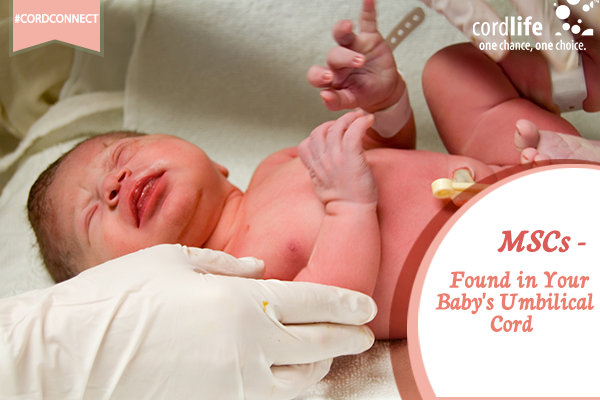Table of Contents
Your baby in the womb is made of millions of tiny stem cells, which are the building blocks of life. As the baby develops, these cells grow as the baby’s skin, nose, hair, heart, etc. At birth, a reserve of these miracle cells remains in the baby’s umbilical cord. Progressive modern medicine has established that the umbilical cord is no longer a medical waste to be discarded. If preserved at the time of birth, these stem cells may well secure your baby and family’s health in the future.
There are primarily two types of stem cells found in the umbilical cord – hematopoietic stem cells (HSCs) and mesenchymal stem cells (MSCs). Red and white blood cells are formed by HSCs that in turn has the unique ability to treat rare blood disorders like leukemia.
Here’s a Little Background on MSCs
Dr. Alexander Friedenstein discovered the existence of MSCs in 1968 and it took another 6 years to isolate the first MSCs from the human body. 1995 saw the start of a number of clinical trials which in today’s date have reached to approximately 344 as registered investigating treatment methodologies for diabetes, spinal cord injuries, etc.
MSCs have been extracted by scientists and doctors from bone marrow, adipose tissue, fetal liver, muscle, lung, and the umbilical cord tissue. Out of these, MSCs isolated from the umbilical cord has the most significance because of the availability of highest concentrations of the stem cells that has conserved the nature of early embryonic cells. MSCs in the umbilical cord are available both in the cord blood and tissue from Wharton’s jelly which is a jellylike element inside the umbilical cord that comprises of several cells from quite a few stem cell genes.
So What Makes the MSCs as Important?
MSCs play a significant role in the development of muscle cells, bone cells, cartilage cells, and fat cells. Grabbing headlines in the domain of regenerative medicine, MSCs are important for the following reasons:
- With the ability to differentiate and multiply into limited cell types, these are naturally unspecialized cells that possess gene activation capability.
- These cells may be utilised in multiple ways during treatment and therapy due to their distinct ability to regenerate.
- Under favourable conditions, HSCs can be transformed and manipulated into various cell types even outside of a living organism.
- HSCs are able to control immune cells and operations.
- To aid in the recovery of impaired cells, HSCs secrete multiple bioactive molecules.
- They linger in the spot of inflammation after the injury of tissue in the body.
Hence, The Future of MSCs
Both HSCs and MSCs from a newborn’s umbilical cord can be collected, processed, and stored for future use. There are no risks to you or your baby, or ethical issues to collect them. Today, HSCs from cord blood are being banked by an increasing number of expectant parents. Many are also banking MSCs in the hopes that clinical trials exploring their use in treating Autism, Cerebral Palsy, burns, and over 350 other diseases will lead to more medical breakthroughs. Although the research for MSCs is there, they are not yet FDA approved in the United States. However, in other parts of the world they are becoming a part of regular medical practices. It is not a matter of if MSCs will do the same in the United States but, when.
